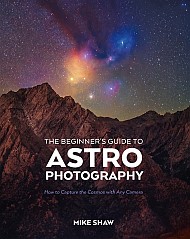Astronomy
Tired of an Old-Fashioned Yule Log Video? Try These Scientific Alternatives Instead
Happy holidays from all of us at Scientific American
FCC Drone Ban—What the New ‘Covered List’ Means for DJI and Pilots
The U.S.’s decision to ban the sale of new foreign-made drones will have far wider-reaching implications than its effect on pilots’ ability to access new models and parts
Wegovy Pill Becomes First Oral GLP-1 Weight-Loss Drug Approved in U.S.
A pill version of the popular GLP-1 weight-loss drug Wegovy has been green-lit for use in the U.S. Here’s what that means for health care
How not to misread science fiction
How not to misread science fiction
Why it is important to make space for solitude over the festive season
Bill Bryson on why he has updated A Short History of Nearly Everything
What is Bryan Johnson up to now? We try to explain
Why it is important to make space for solitude over the festive season
What is Bryan Johnson up to now? We try to explain
Bill Bryson on why he has updated A Short History of Nearly Everything
Alpine communities face uncertain future after 2025 glacier collapse
Alpine communities face uncertain future after 2025 glacier collapse
Artemis II Crew Launch Day Rehearsal
How to extend and improve your life by getting more creative
How to extend and improve your life by getting more creative
Did Astronomers See a Star Explode Twice?
Astronomers are trying to determine if they've witnessed a complex stellar explosion or a relatively ordinary supernova.
The post Did Astronomers See a Star Explode Twice? appeared first on Sky & Telescope.
The best space pictures of 2025, from supernovae to moon landings
The best space pictures of 2025, from supernovae to moon landings
Webb Spots the 'Smoke' from Crashing Exocomets Around a Nearby Star
The James Webb Space Telescope (JWST) was involved in yet another first discovery recently available in pre-print form on arXiv from Cicero Lu at the Gemini Observatory and his co-authors. This time, humanity’s most advanced space telescope found UV-fluorescent carbon monoxide in a protoplanetary debris disc for the first time ever. It also discovered some features of that disc that have considerable implications for planetary formation theory.


